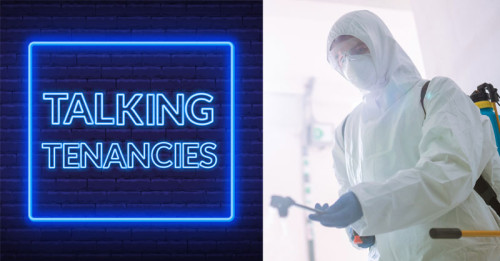Illicit drug laboratories are places where illegal drugs such as methylamphetamine (meth) are manufactured. During the manufacturing process, harmful contaminants are produced. These substances can be absorbed into a building's walls, ceilings, fixtures and furnishings.
Drug use within a rental property can also lead to contamination, although usually not to the same levels as when manufacturing has occurred.
If you suspect that an active drug laboratory is operating in a property, contact the Queensland Police Service (QPS) immediately on 131 444 (Policelink) or report it online on the QPS website. You can also refer to the QPS website – what to do if you suspect a drug lab.
The information below relates to suspected contamination of a property from previous illicit drug activities.
Possible signs of contamination
If a property is contaminated from drug manufacturing or drug use, tenants may experience symptoms of exposure such as throat irritation or breathing difficulties. For further information about possible symptoms and health risks, refer to Queensland Health – illicit drug laboratories or enHealth guidance – Guidance on clandestine drug laboratories and public health risks.
What to do if you suspect that a property is contaminated
The Residential Tenancies and Rooming Accommodation Act 2008 (the Act) doesn’t specifically mention drug contamination. However, the Act does state that at the start of a tenancy and throughout, the property manager/owner has the responsibility to ensure the premises (and inclusions) are fit to live in, are in good repair and abide by all health and safety standards including minimum housing standards.
If a tenant or property manager/owner suspects a premises might be contaminated by illicit drugs, they should mention their concerns to the other party as soon as possible. The tenant and property manager/owner may then consider testing to confirm if traces of harmful substances are detected – or not detected – in the property.
Resolving disputes
Proactive communication between the property manager/owner and tenant to discuss drug contamination concerns, potential clean up and options for the tenancy can help both parties self-resolve any issues as they arise. For tips on how to work together to come to a solution, see the how to resolve tenancy issues webpage.
If an agreement cannot be reached or the issue is not resolved through self-resolution, tenants have the option to issue a Notice to Remedy Breach (Form 11) if they believe the terms of the tenancy agreement are not being met, or either the tenant or the property manager/owner can seek free and impartial dispute resolution from the RTA.
More information
For further information regarding possible health risks from drug contamination, contact Queensland Health’s Public Health Unit or visit the Queensland Health website.
For further information about detecting drug contamination, acceptable levels and recommended approaches for clean up refer to the Australian Government’s clandestine drug laboratory remediation guidelines.
To find out more about your rights and responsibilities in a tenancy, or for more information or support, you can contact the RTA on 1300 366 311.


